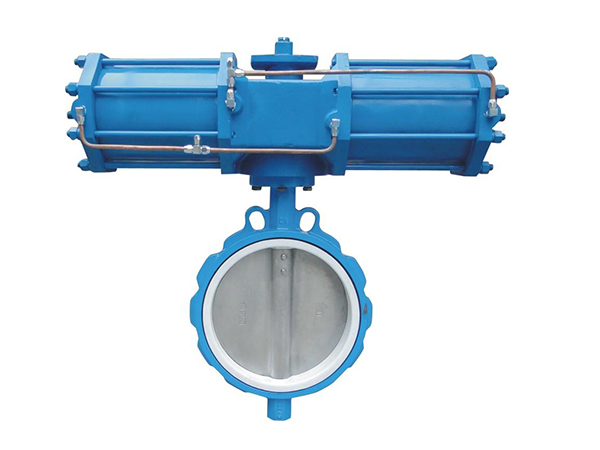Common Faults and Elimination Methods of Pneumatic Butterfly Valves

I. Testing and Adjustment of Pneumatic Butterfly Valves
1. Before leaving the factory, all components of butterfly valves, whether manual, pneumatic, hydraulic or electric, have been strictly debugged. When users recheck the sealing performance, they should evenly fix both the inlet and outlet sides, close the butterfly valve, apply pressure to the inlet side, and observe whether there is any leakage at the outlet side. Before conducting the strength test on the pipeline, the disc should be opened to prevent damage to the sealing pair.
2. Although pneumatic butterfly valves have been strictly inspected and tested before leaving the factory, there may still be individual products with automatic screw displacement during transportation, which requires re-adjustment, pneumatic, hydraulic, etc. Please refer to the user manual of the matching drive device.
3. The control mechanism of electrically driven butterfly valves has been adjusted for the opening and closing travel when leaving the factory. To prevent the wrong direction when the power is connected, users should first manually open the valve to the half-open position after the first power connection, and then press the electric switch to check if the direction of the indicator plate is consistent with the closing direction of the valve.
II. Common Faults of Pneumatic Butterfly Valves and Their Elimination Methods
1. Before installation, confirm whether the performance of the factory's product and the medium flow direction arrow are consistent with the working conditions, and clean the inner cavity of the valve thoroughly. Do not allow impurities or foreign objects to adhere to the sealing ring and the butterfly plate. Do not close the butterfly plate before cleaning to avoid damaging the sealing ring.
2. It is recommended to use a special flange for butterfly valves, namely the HGJ54-91 type socket weld steel flange, for the flange installation of the butterfly plate.
3. The best installation position in the pipeline is vertical, but it must not be installed upside down.
4. To adjust the flow rate during use, control it with the worm gear box.
5. For butterfly valves that are frequently opened and closed, open the worm gear box cover every two months or so to check if the grease is normal and maintain an appropriate amount of grease.
6. Check that all connection parts are tightened to ensure the sealing performance of the packing and the smooth rotation of the valve stem.
7. Metal-sealed butterfly valves are not suitable for installation at the end of the pipeline. If they must be installed at the end of the pipeline, an outlet flange should be installed to prevent the sealing ring from being compressed and displaced.
8. Regularly check the operation effect of the valve stem installation and use, and promptly eliminate any faults found.









 +86-021-67895388
+86-021-67895388 shghfmc@163.com
shghfmc@163.com  93862333
93862333